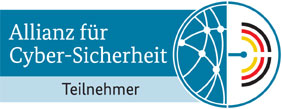The Automotive industry’s inadequate approach towards software (in the cars)
Introduction
The automotive industry has witnessed a paradigm shift with the increasing integration of software in vehicles.
Modern cars are no longer just mechanical devices with a motor, wheels and steering; they are now sophisticated machines having dozens of CPUs (called ECU), entire computers, high speed network to connect them (called CAN-bus) and relying on complex highly distributed software systems.
In my opinion, the industry fails to adapt to this new reality and fully embrace the concept of cars as hardware running software has significant consequences.
This may sound contradictory at first, on one side they have these complex systems, on the other side they fail to adapt to this reality.
In this article, I will explore how the automotive industry is not dealing correctly with this transformation and its potential implications.
Limited Focus on Software Development and Updates
Traditionally, the automotive industry has primarily focused on hardware design and manufacturing, treating software as a necessary mean to make the hardware work.
This approach results in a lack of emphasis on software development practices and updates capabilities.
While cars are becoming more connected and dependent on software for various functionalities, manufacturers often overlook the importance of continuous software improvements and security updates.
How often do you update the software of your car? Maybe once a year in the best case, usually once every several years or not at all.
It’s not all bad, but think of how many times does Open SSL get updated in a year. Theoretically you should see an update every few months.
Insufficient Over-the-Air (OTA) Update Capabilities
Related to updates, Over-the-Air (OTA) updates have gained prominence in the software industry as an efficient means of delivering software fixes, updates, and new features directly to users.
However, the automotive industry has been slow to adopt OTA capabilities on a widespread scale out of their own will.
Limited OTA functionality not only hampers the ability to address software vulnerabilities promptly but also restricts the potential for delivering new features and enhancements to vehicles post-purchase.
Fortunately, there are many initiatives to solve this and even legislation (UNECE R 155 and R 156) that started to make software updates mandatory for releasing new car types.
Slow Adoption of Agile SW Development Processes
Agile software development methodologies have become the norm in the software industry due to their flexibility and iterative nature.
However, the automotive industry lags behind in adopting these practices. And this is politically correct formulated.
The OEMs are still working with the V-Model, despite the fact that you hear them talking about sprints, iterations, Scrum, XP programming. All these are actually implemented with small V runs and have little to nothing to do with agility.
The slow pace of development and release cycles in the automotive sector hinders the quick implementation of software fixes and feature enhancements.
This delay not only frustrates customers but also puts their safety at risk by keeping potentially critical issues unresolved for extended periods.
Lack of Consumer Education and Awareness
The general public’s understanding of cars as hardware running software is limited. First when TESLA became an important OEM, the entire world started to understand how important software is in a car.
Immediately after has the automotive industry started to feel threatened by it and they started to invest more in software, more particularly, in improving the user experience of their cars.
If I make a comparison with the mobile phones in the early 2000, the TESLA is the iPhone while the other OEMs were Nokia and the others. We all know what happened to Nokia because they did not move faster.
Consumers must continue to push the OEMs to enhance the software of their cars, but this is a slow process, because the cars with good software are expensive, and people with money usually don’t look first at the software capabilities of their cars.
Inadequate Cybersecurity Measures
As cars become increasingly connected and autonomous, they become vulnerable to cyber threats.
Unfortunately, the automotive industry has been sluggish in implementing robust cybersecurity measures to protect vehicles from potential attacks.
Insufficient attention to software security leaves vehicles open to hacking, which can lead to unauthorized access, data breaches, or even physical harm.
The industry must prioritize cybersecurity and invest in proactive measures to safeguard vehicles and their occupants.
Because cybersecurity is hard to implement, very expensive and requires specialized personnel, no OEM was willing improving their cybersecurity.
This is the reason why the UNECE R155 requires now a Cybersecurity Management System (CSMS) audit in order to allow new vehicle types.
If you are an OEM or subcontractor (Tier 1-N) then you may want to know that Endpoint Cybersecurity is offering consulting on how to implement such a CSMS and make it auditable.
Lack of standards
Same as for computers, the IT industry started to exponentially increase only after there were good reasons to use computers. Only after the Internet became main stream have businesses, regular people and families started to buy computers. So communication or inter-communication was and still is a main factor to buy hardware.
The same is happening with cars: people start to see the need for software in cars and now they start asking for better software. This can only happen if there is a market for software, but to create a market you need standards.
Android Auto and Apple Car are standards that allow 3rd parties to create apps for the cars, but the offer is extremely small and not really relevant.
In my opinion, only when cars can exchange data either directly (Vehicle to Vehicle communication – V2V) or through some infrastructure (V2I) on a large scale will we see a significant increase in software demand.
Unfortunately, the lack of standards for communication between vehicles is making this process extremely slow.
Conclusion
The automotive industry’s failure to fully embrace the concept of cars as hardware running very complex software has far-reaching consequences on the long term.
By neglecting software development, cybersecurity, and collaboration with software experts, OEMs put customer safety and satisfaction at risk. Classical OEMs have started to see too late that better software means more sales and more satisfied customers and reacted too slow to find solutions.
The limited adoption of agile development processes and inadequate OTA update capabilities further hinder progress in this domain.
To address these challenges, the industry must prioritize software as an integral part of vehicle design and manufacturing, invest in cybersecurity measures, foster collaboration with software experts, and educate consumers about the software-driven nature of modern cars.
Only through a comprehensive and proactive approach can the automotive industry truly unlock the potential of cars as hardware running software.
The post The Automotive industry’s inadequate approach towards software (in the cars) first appeared on Sorin Mustaca on Cybersecurity.


